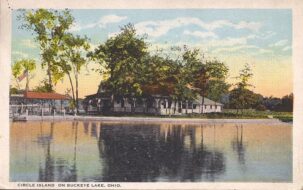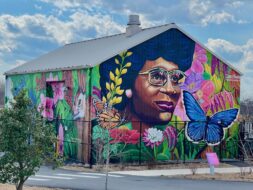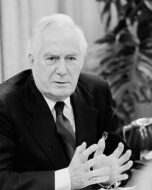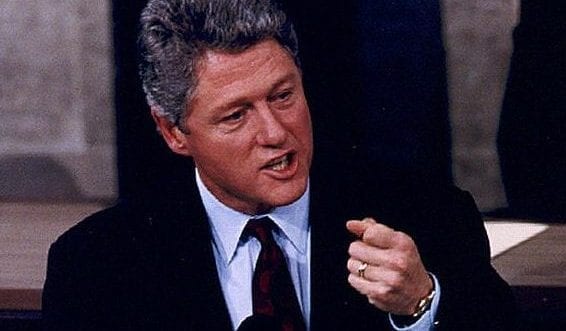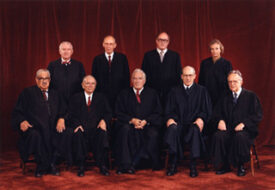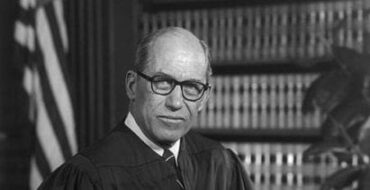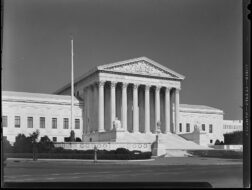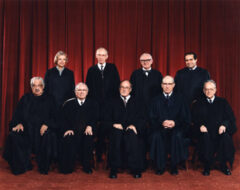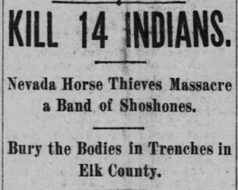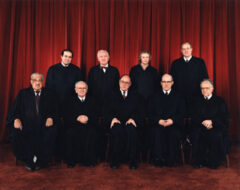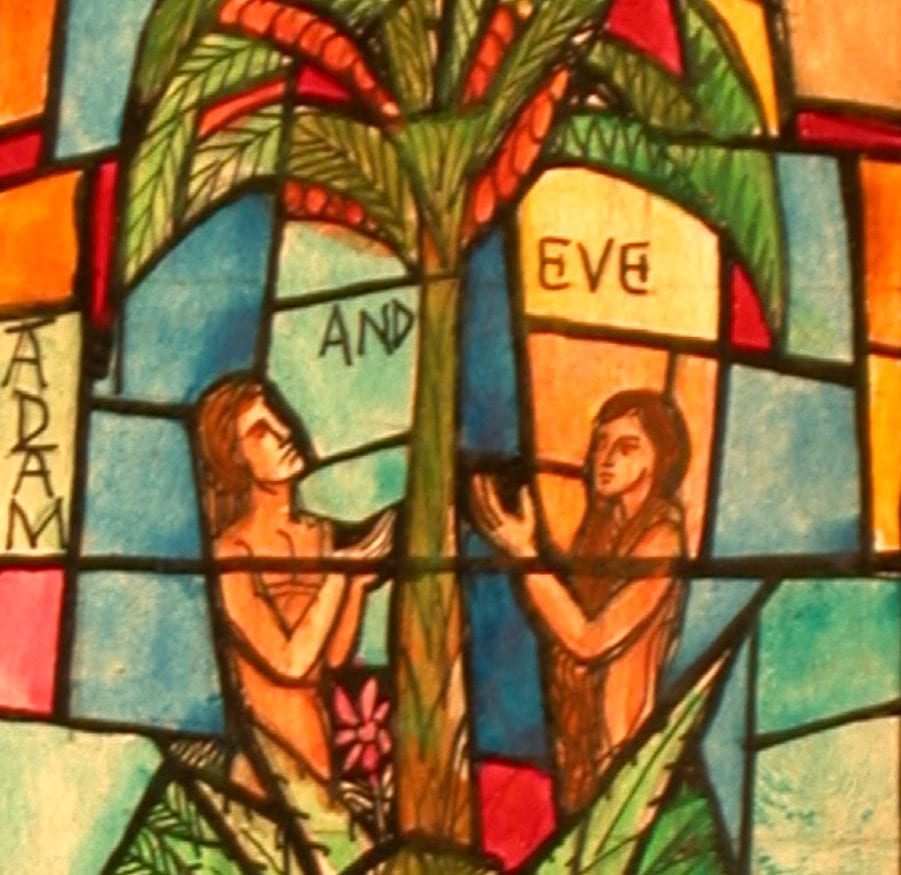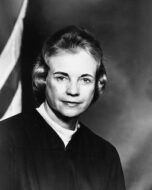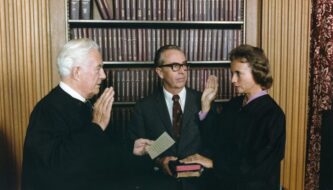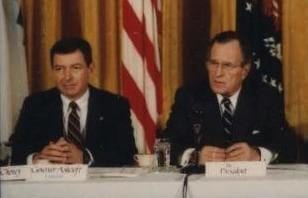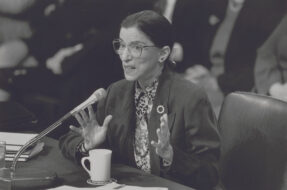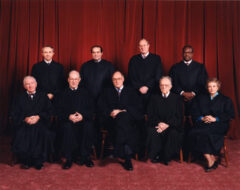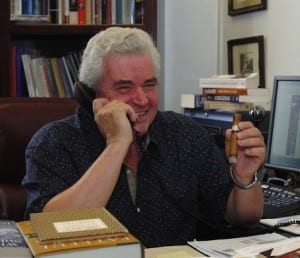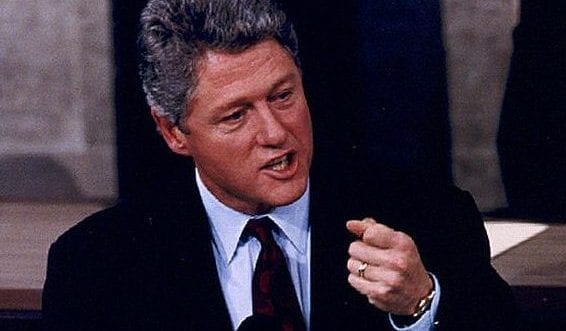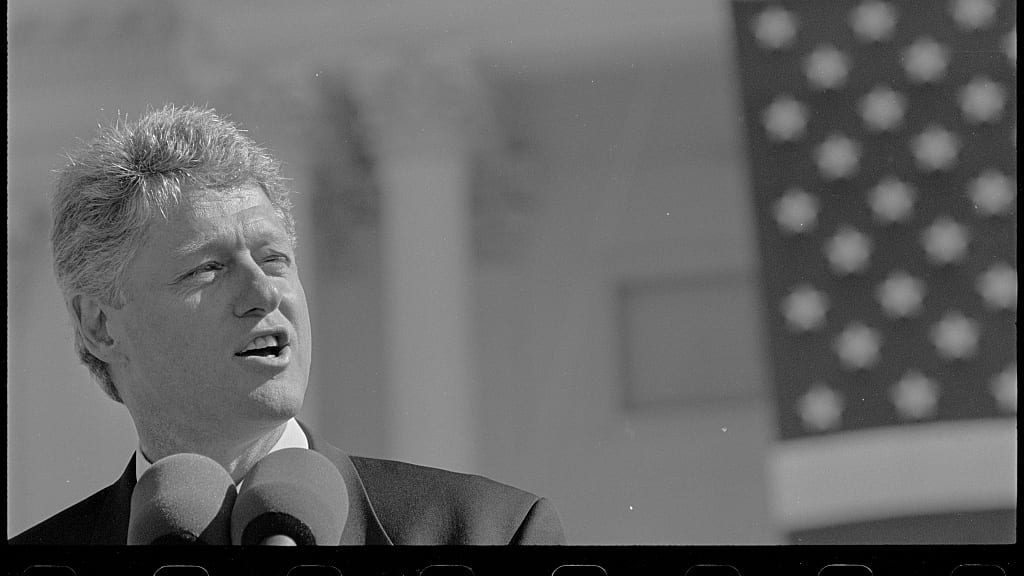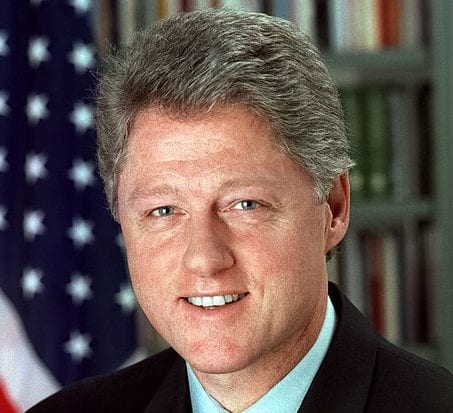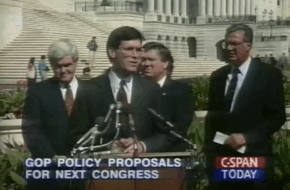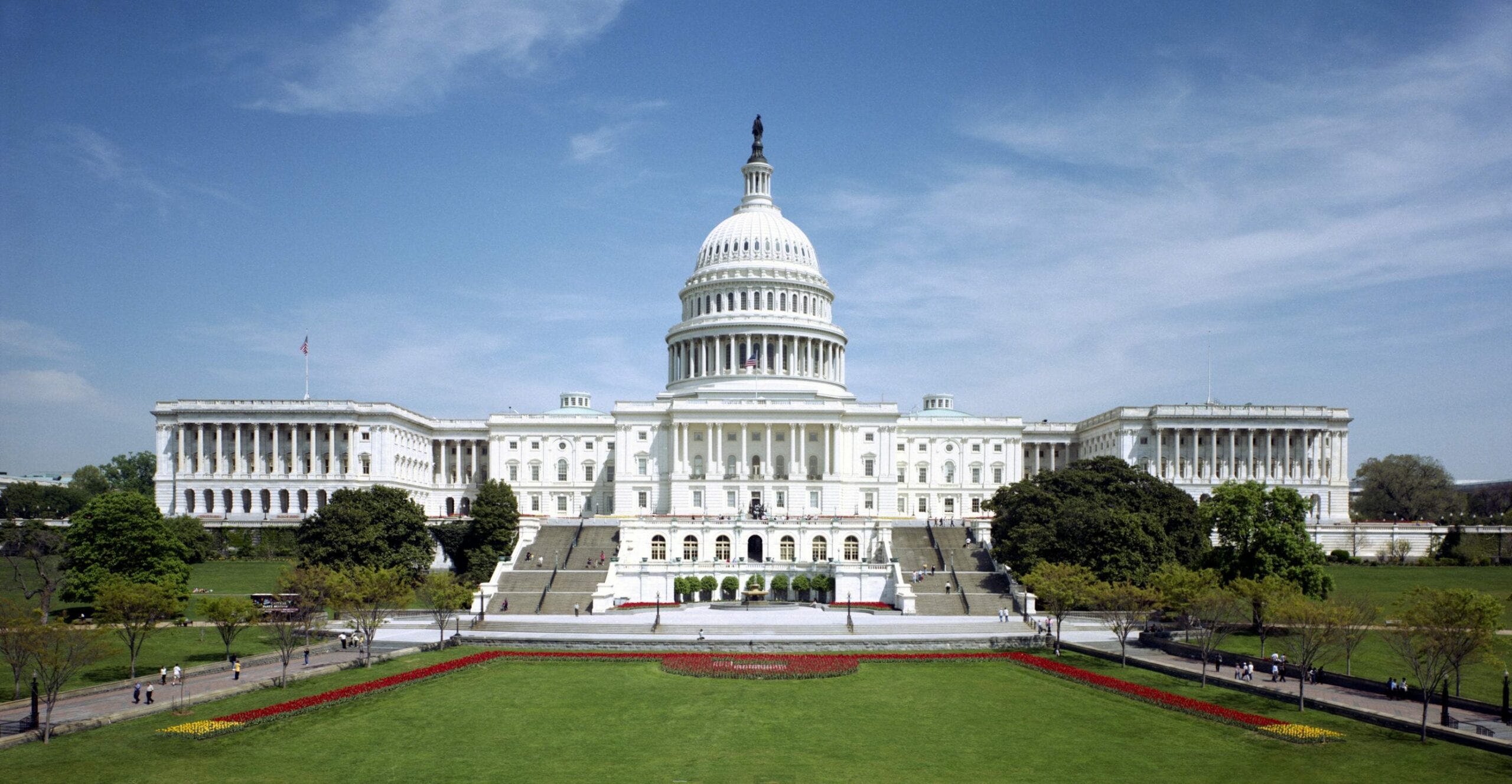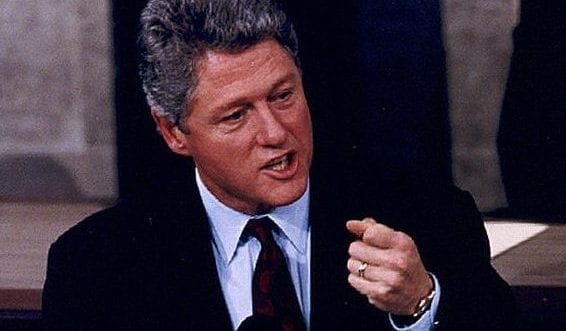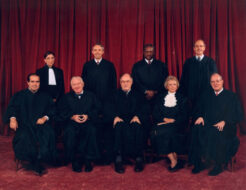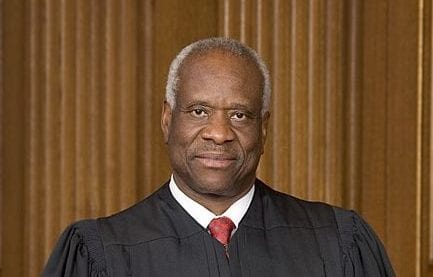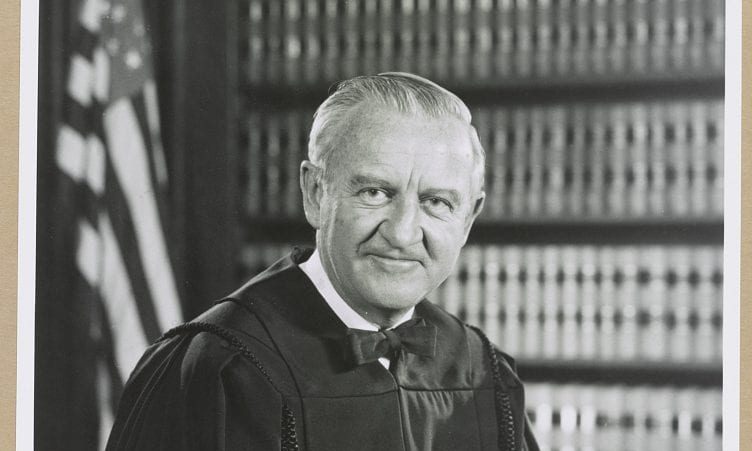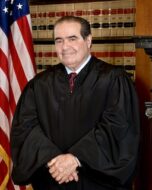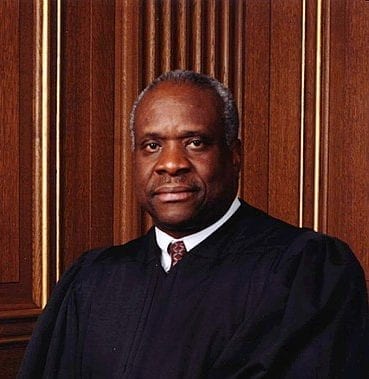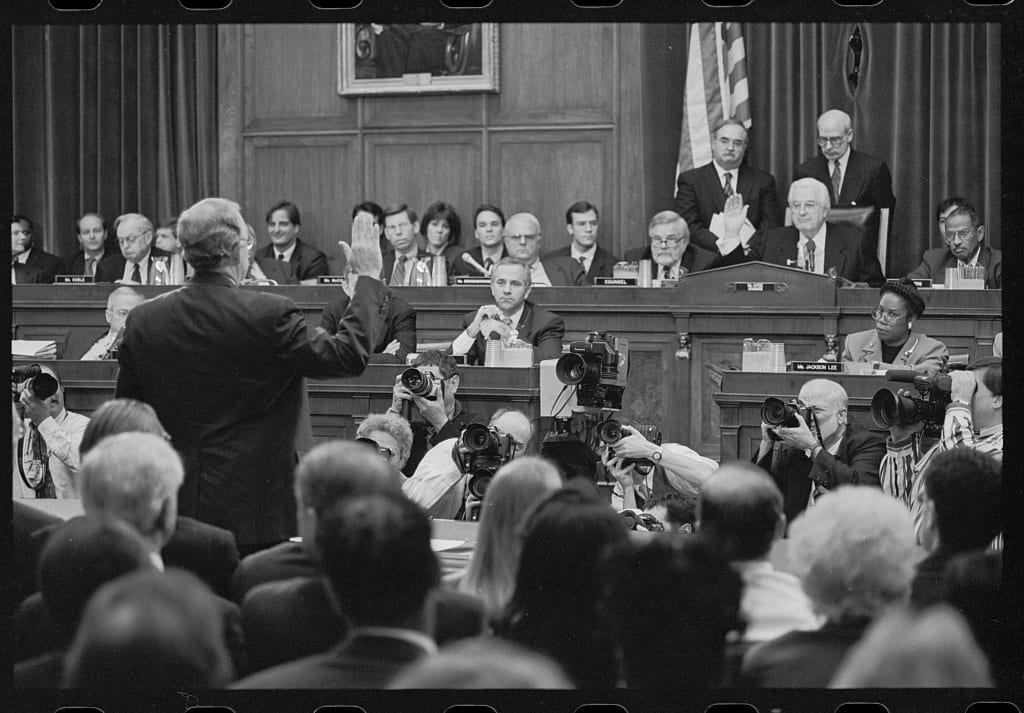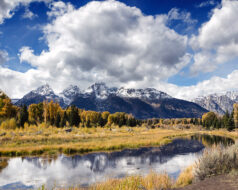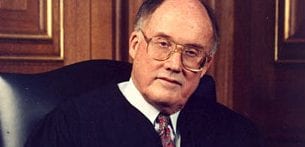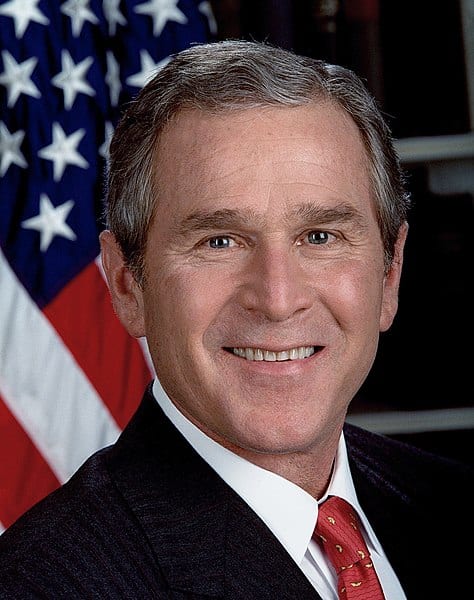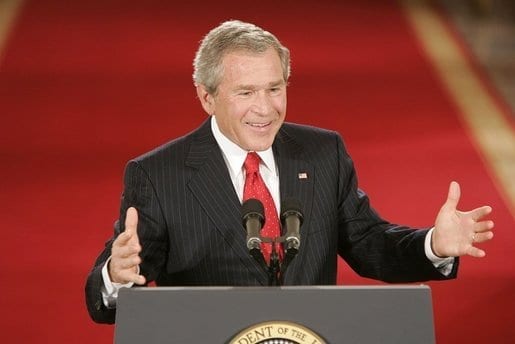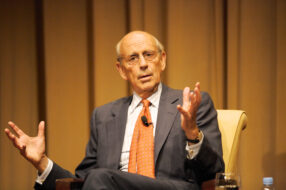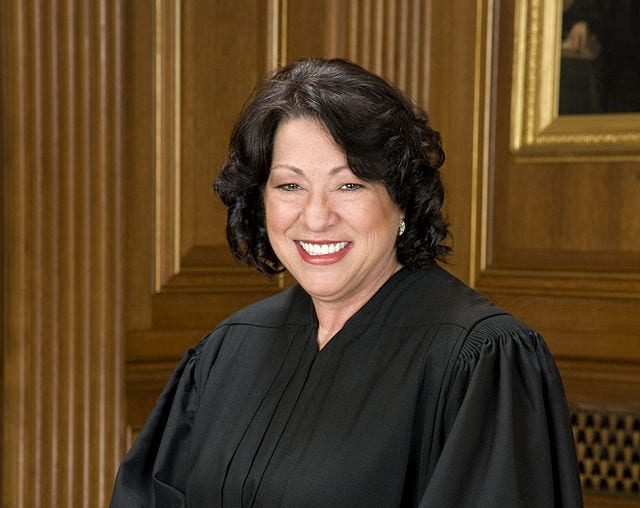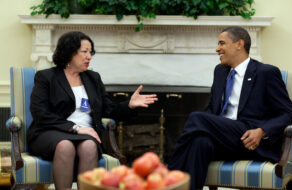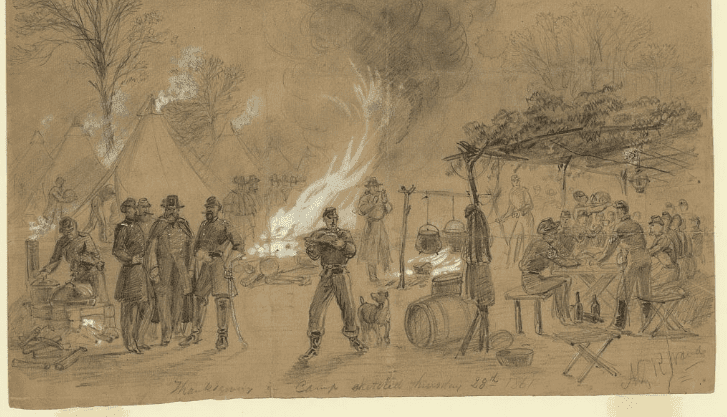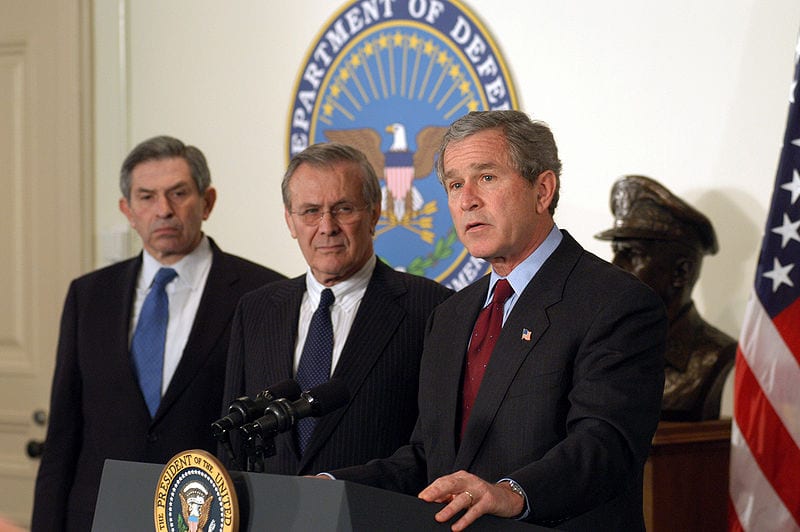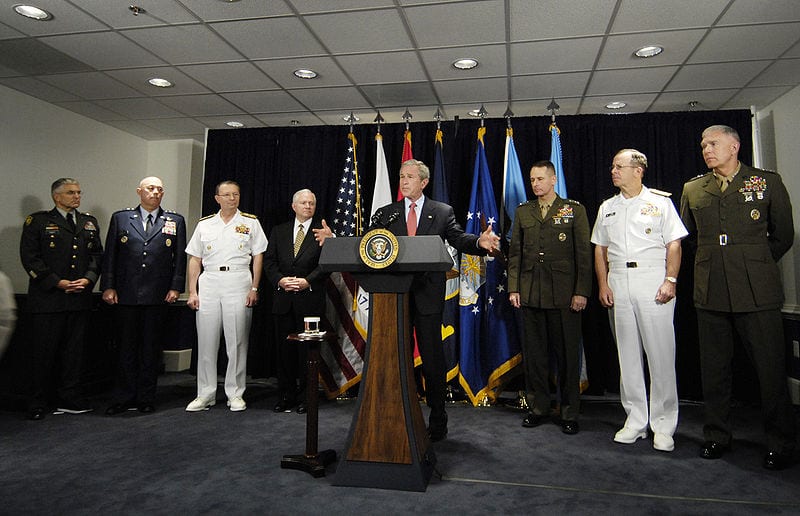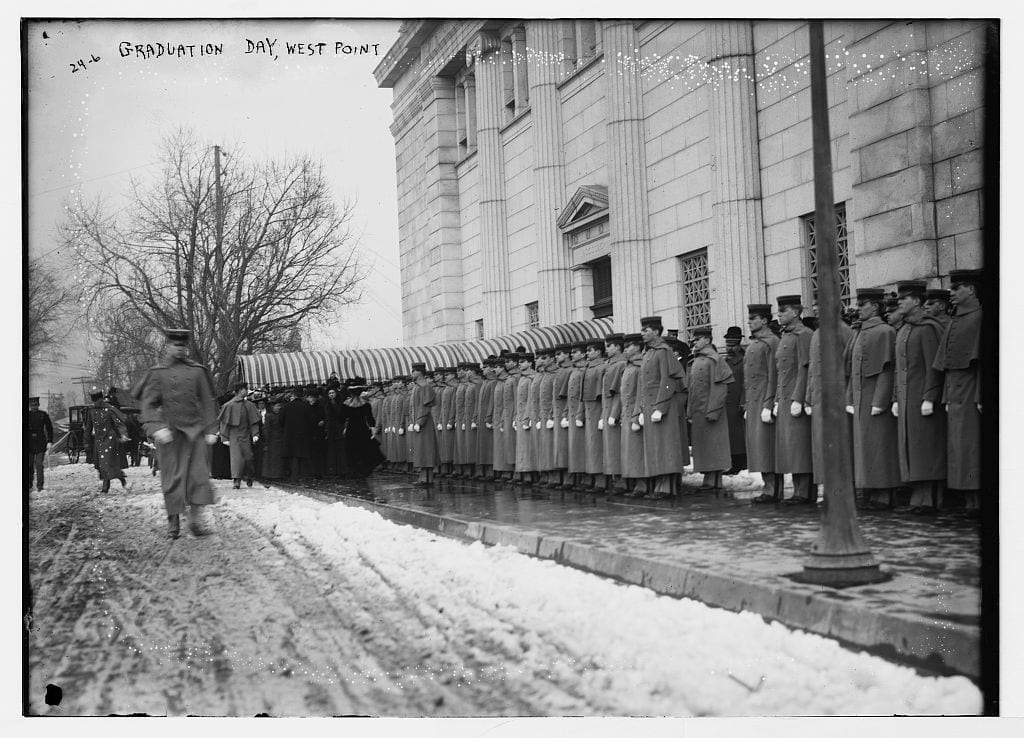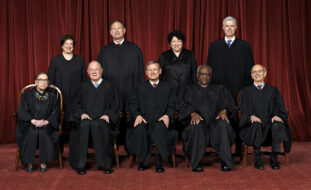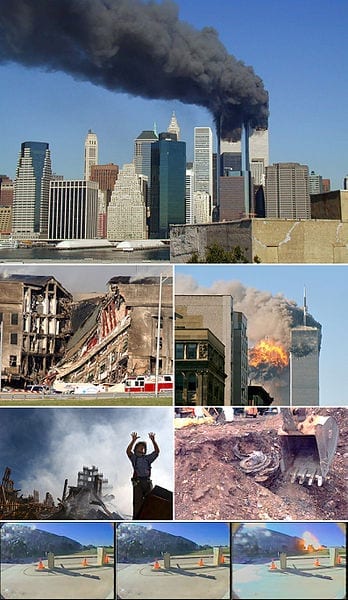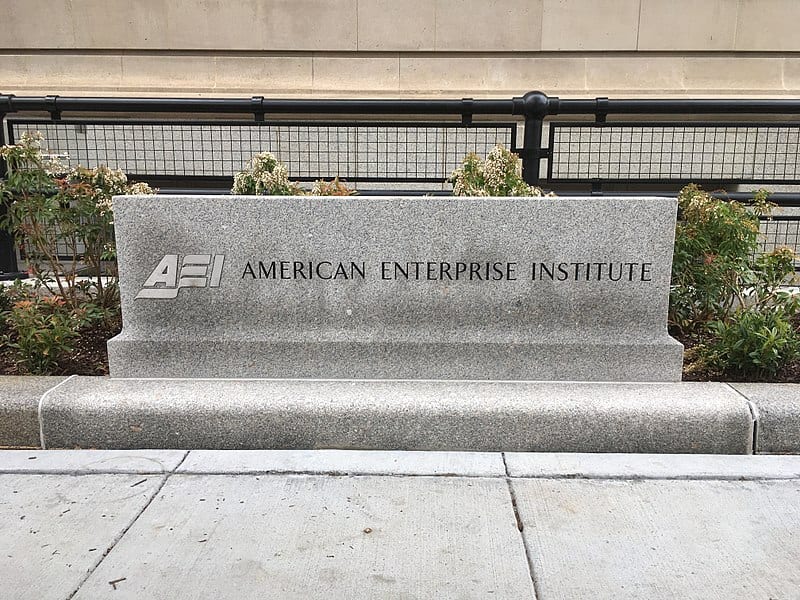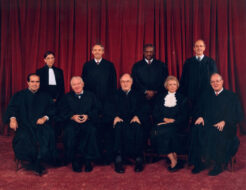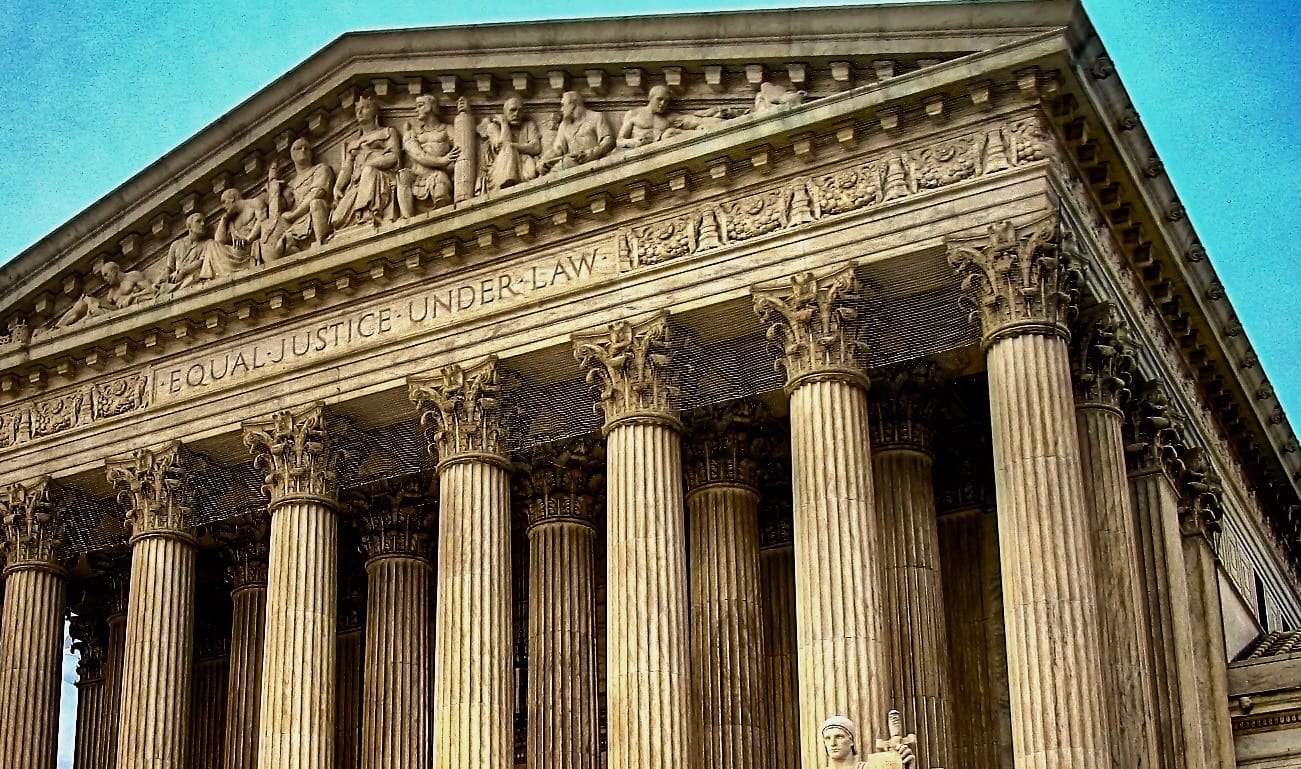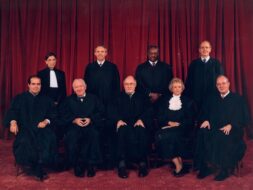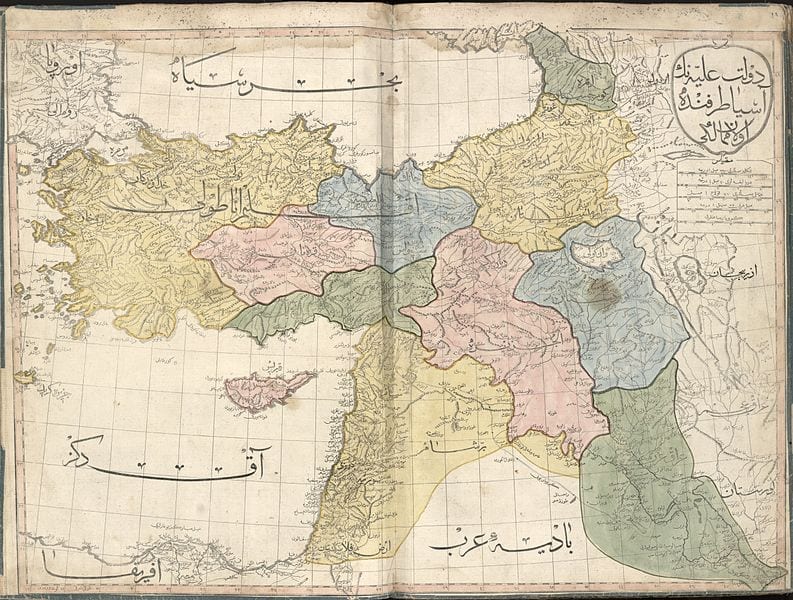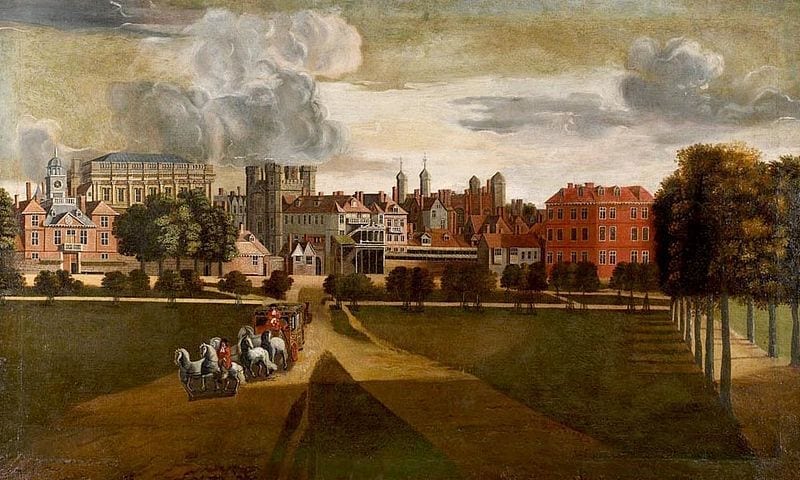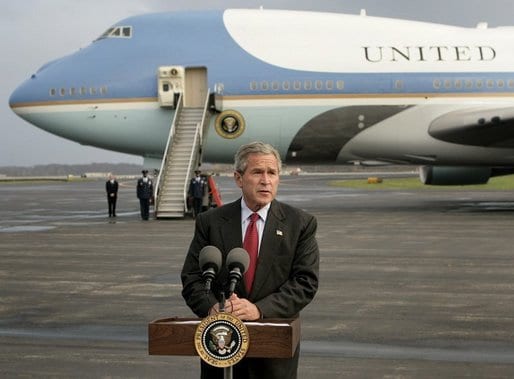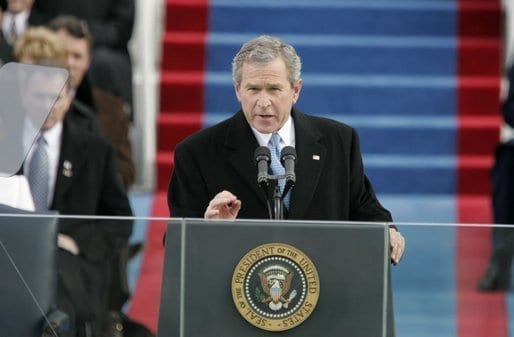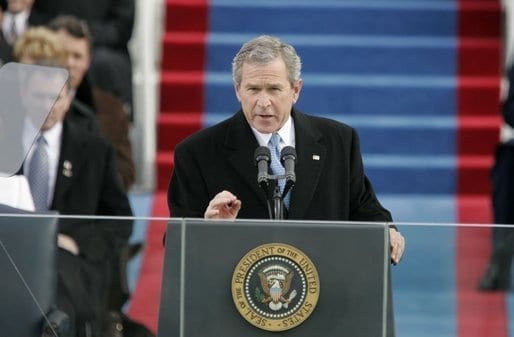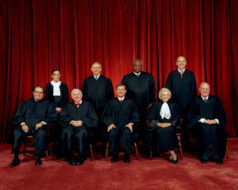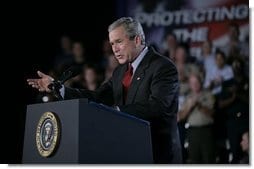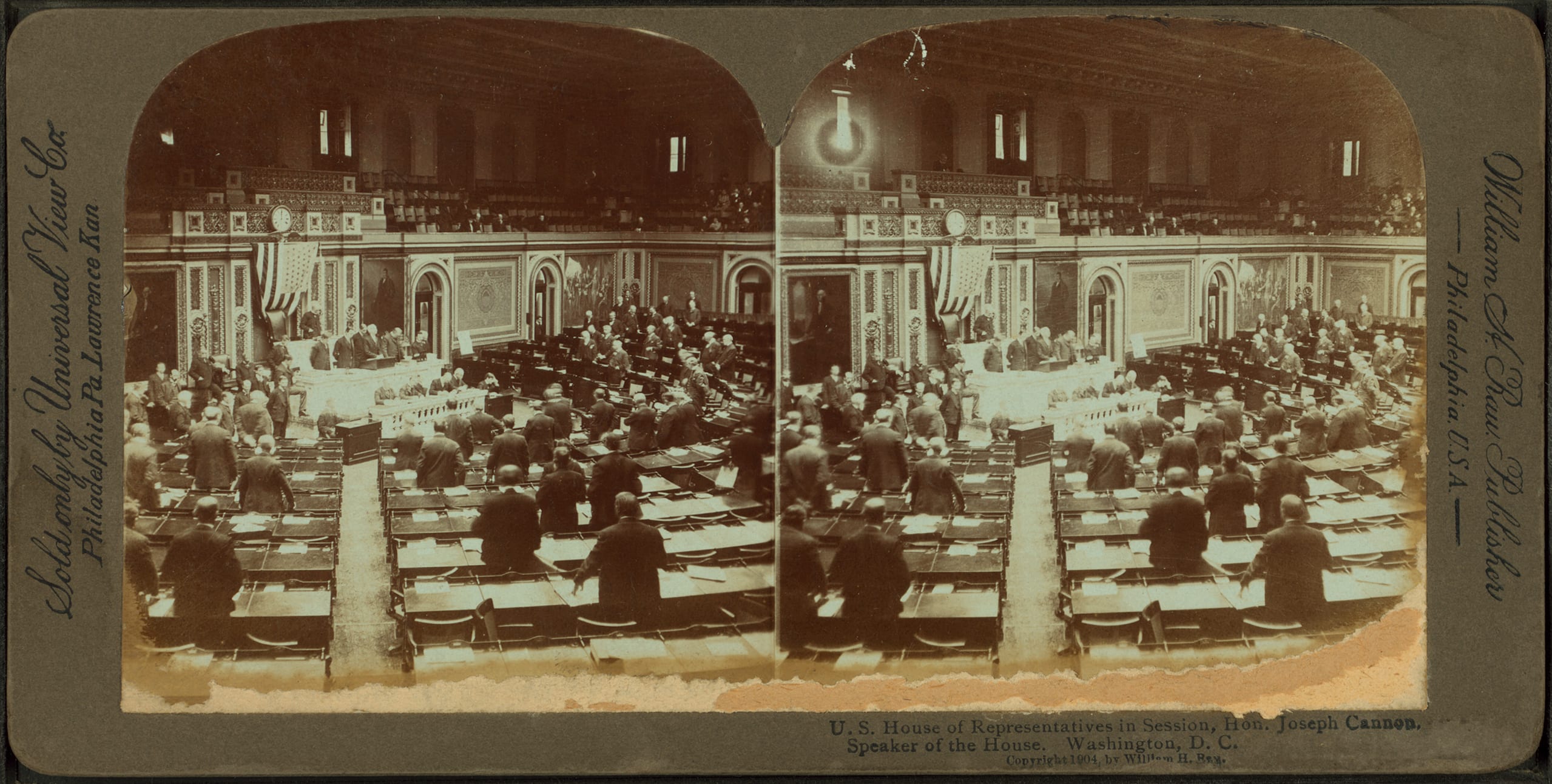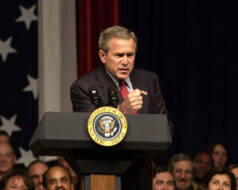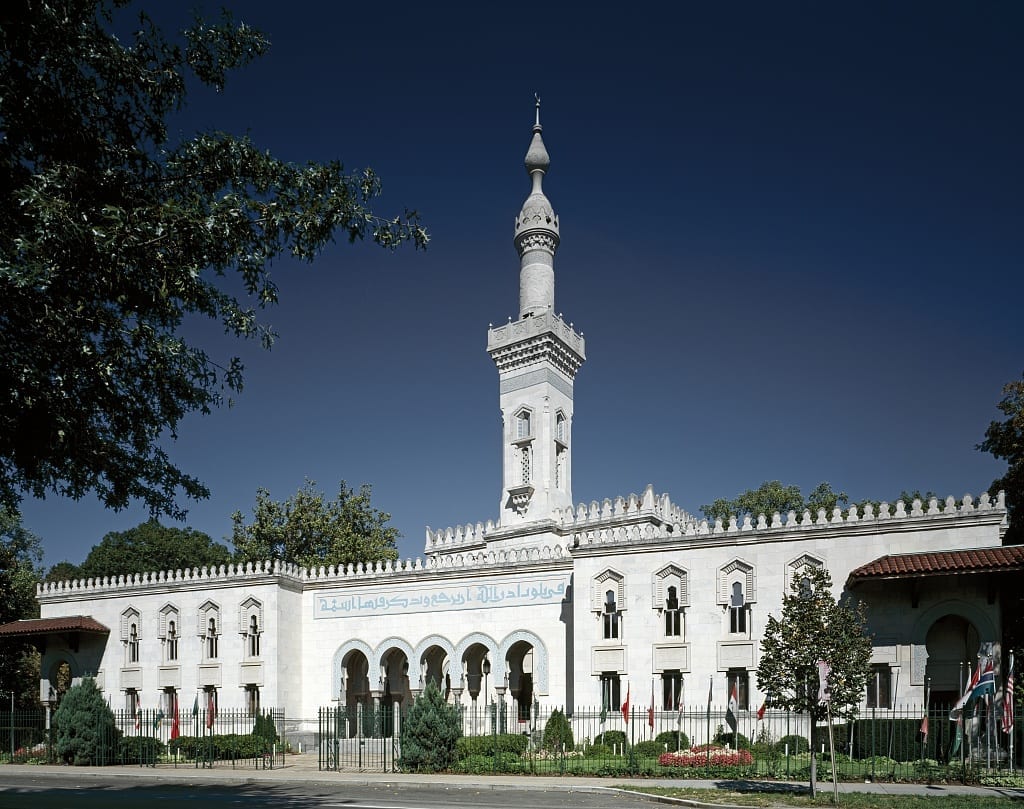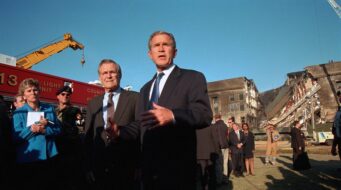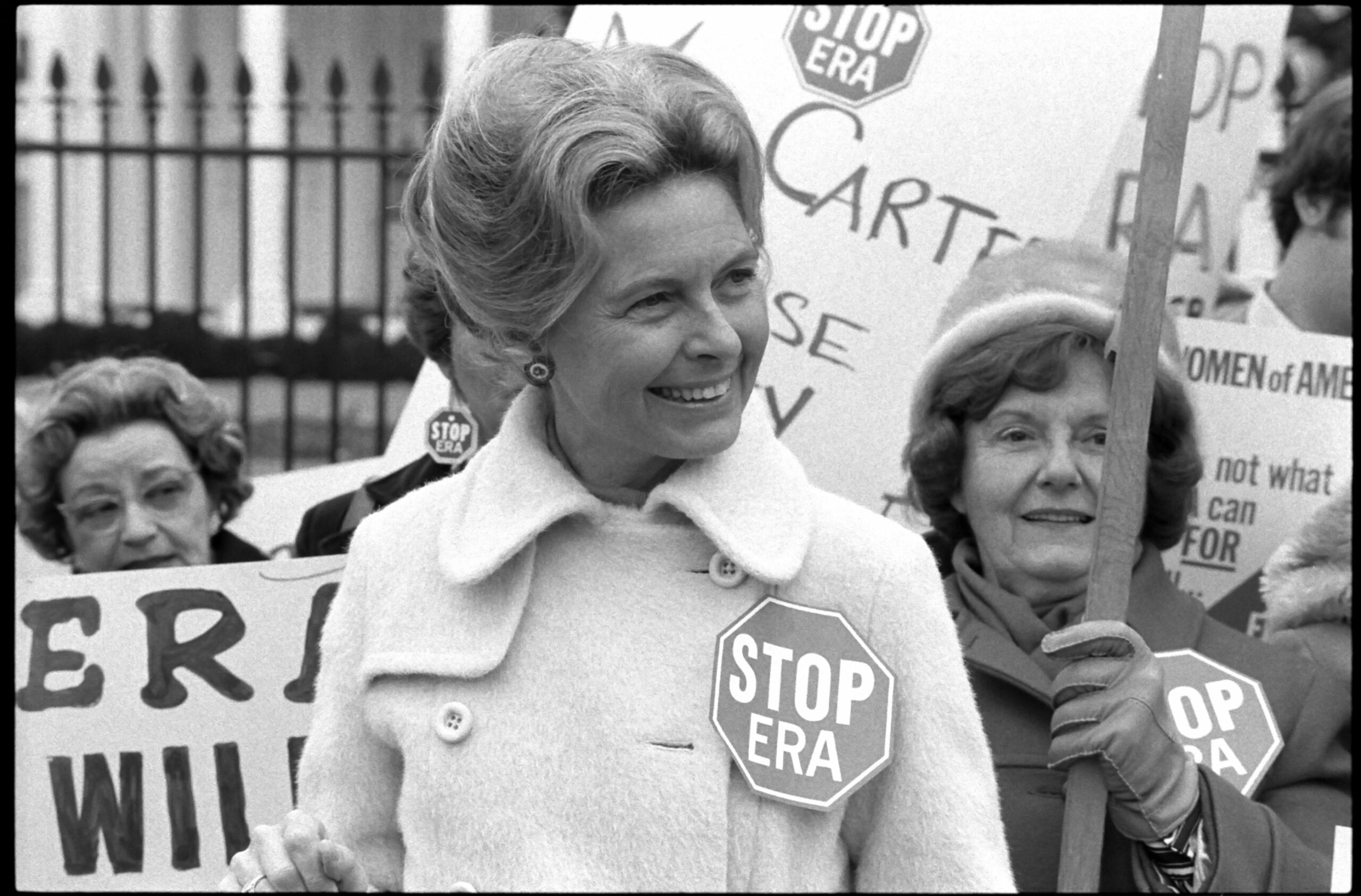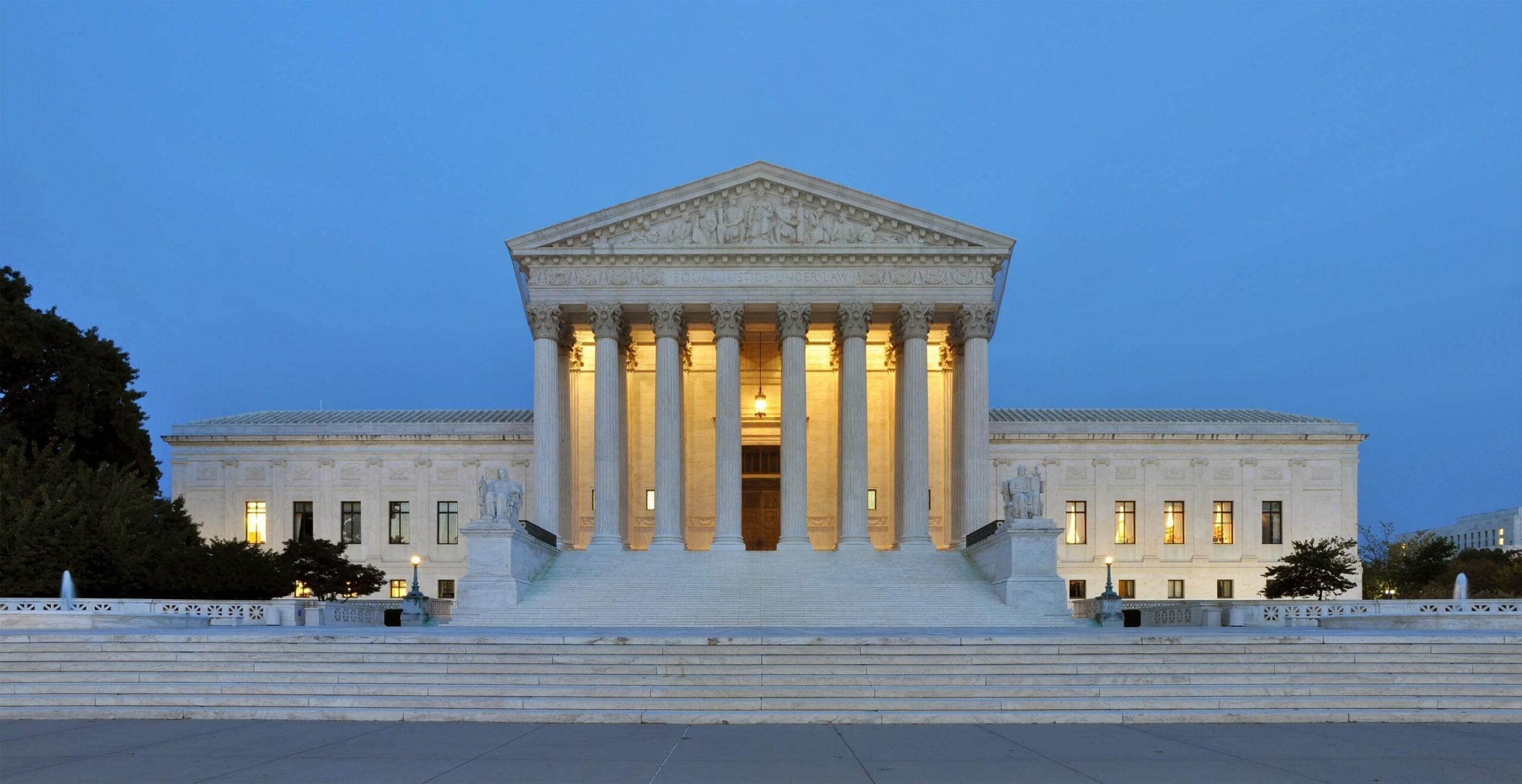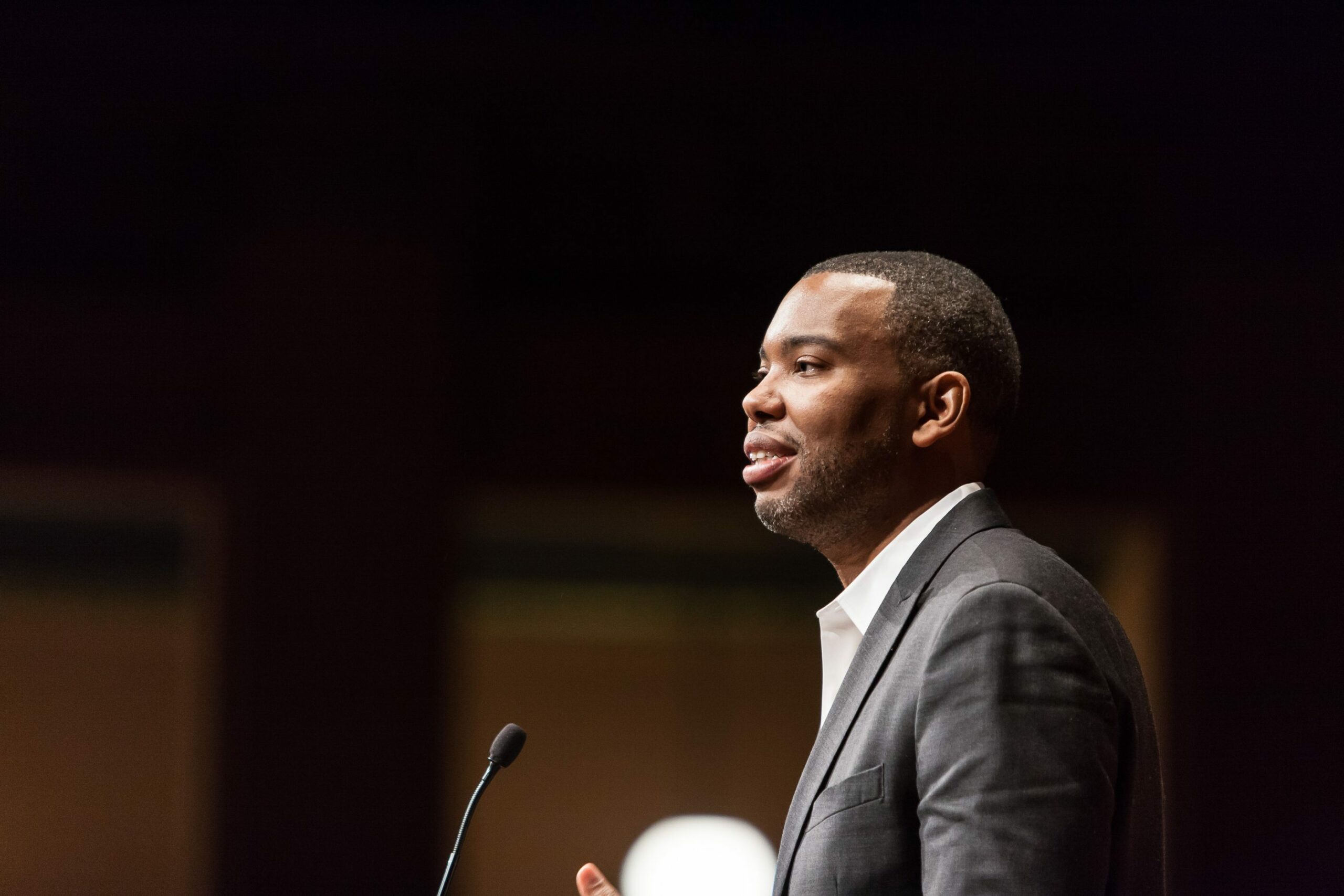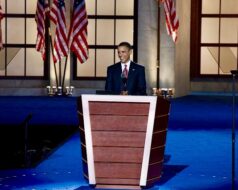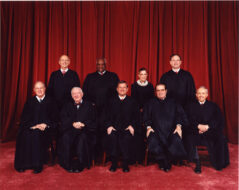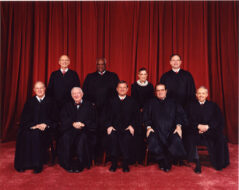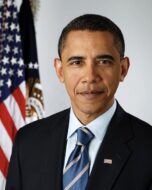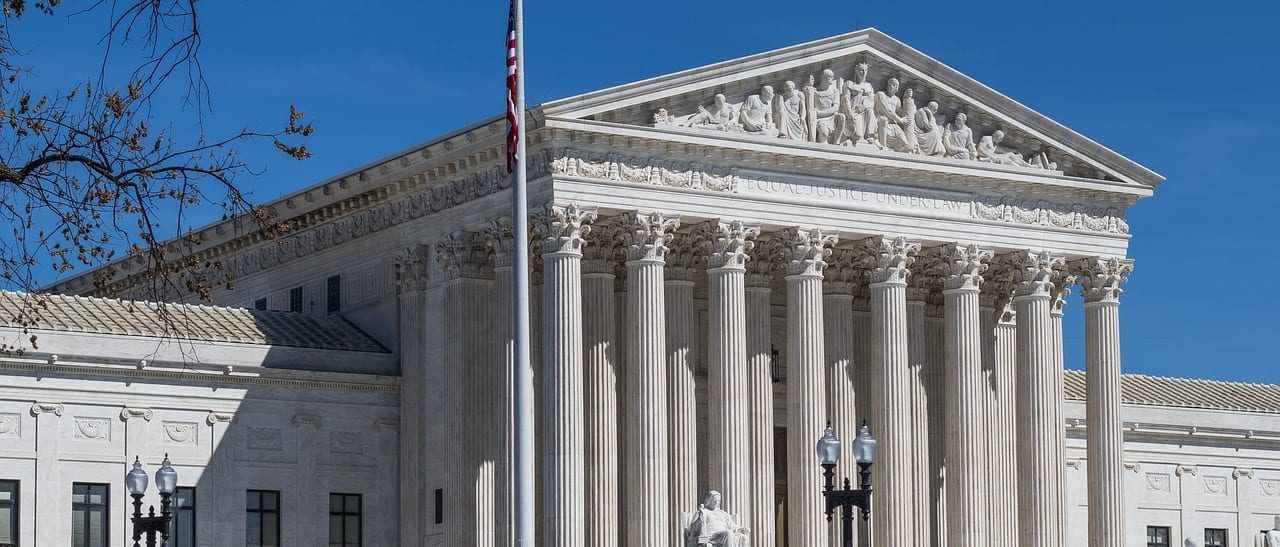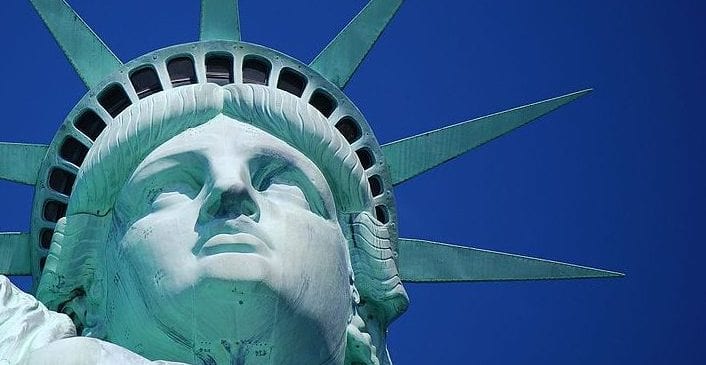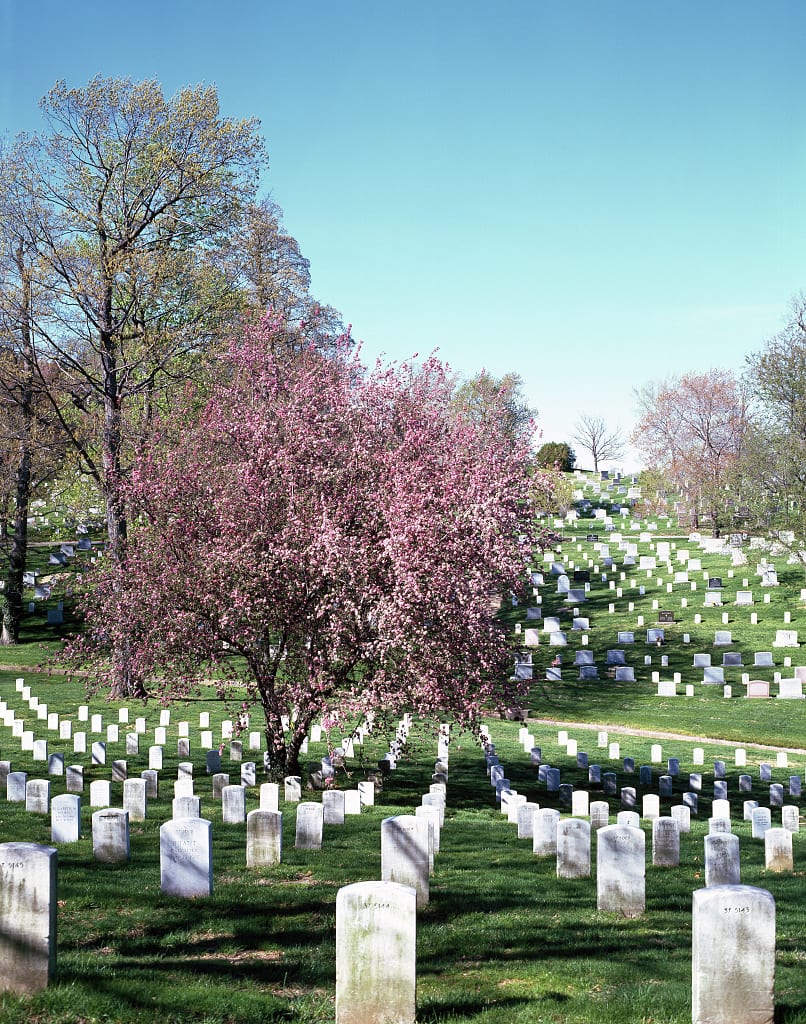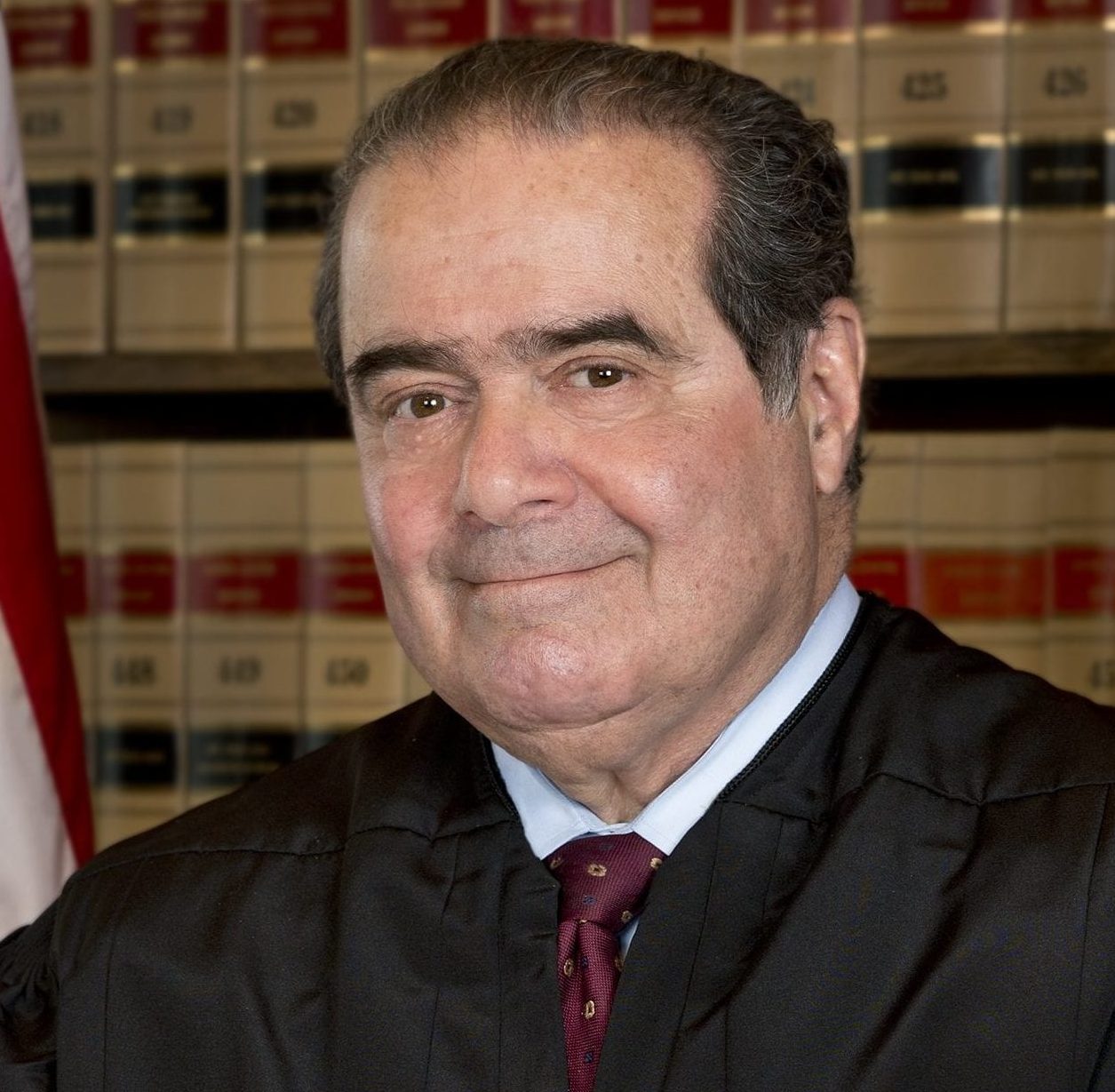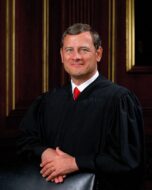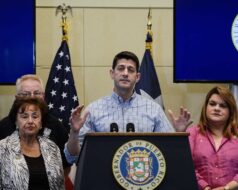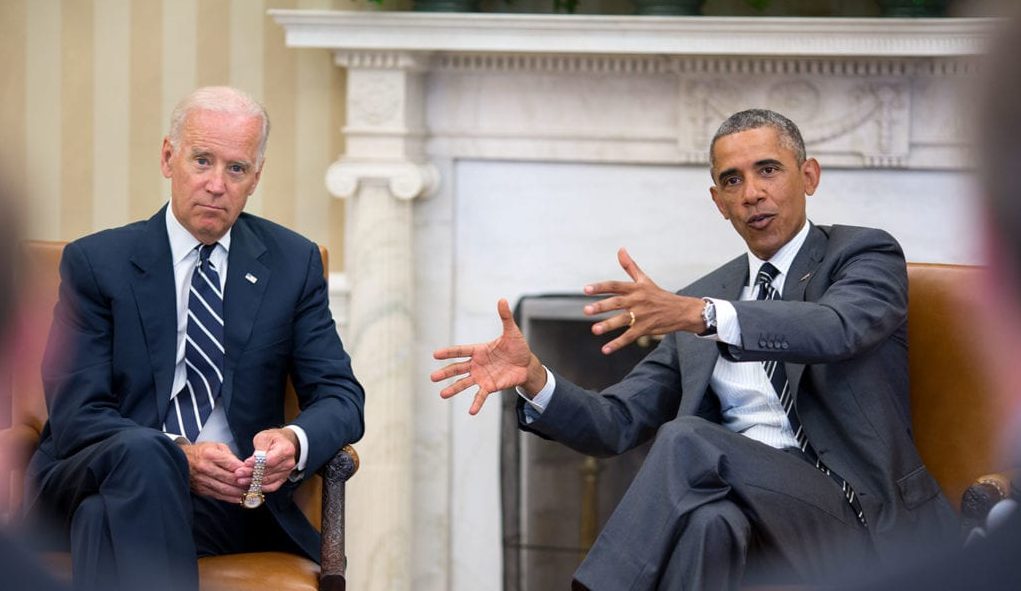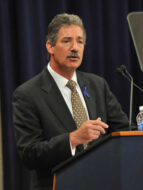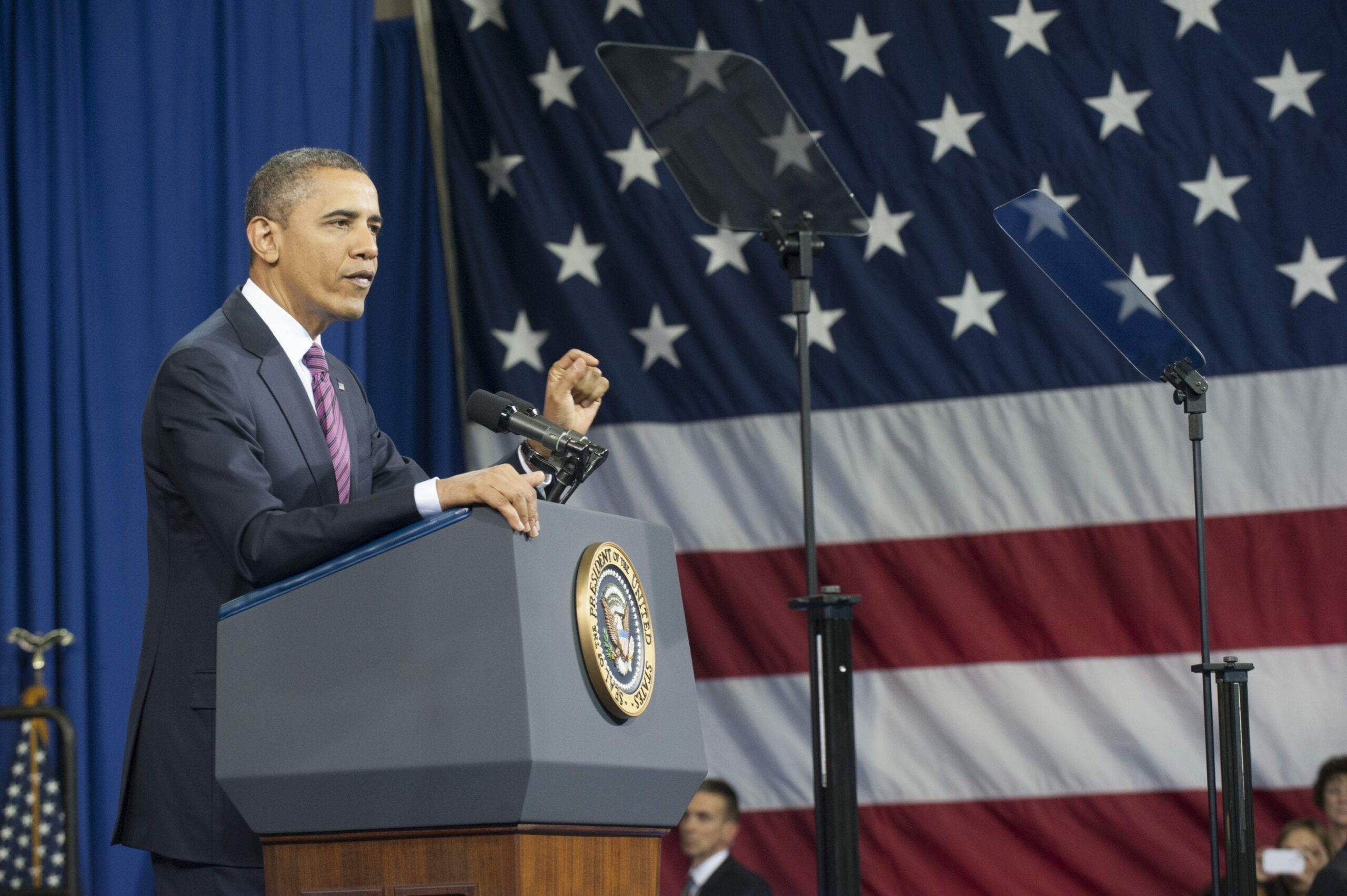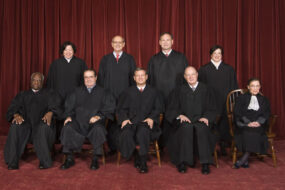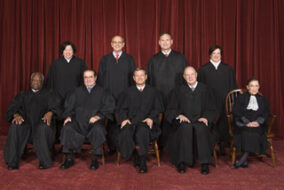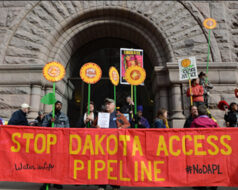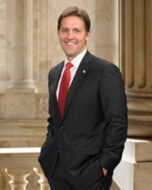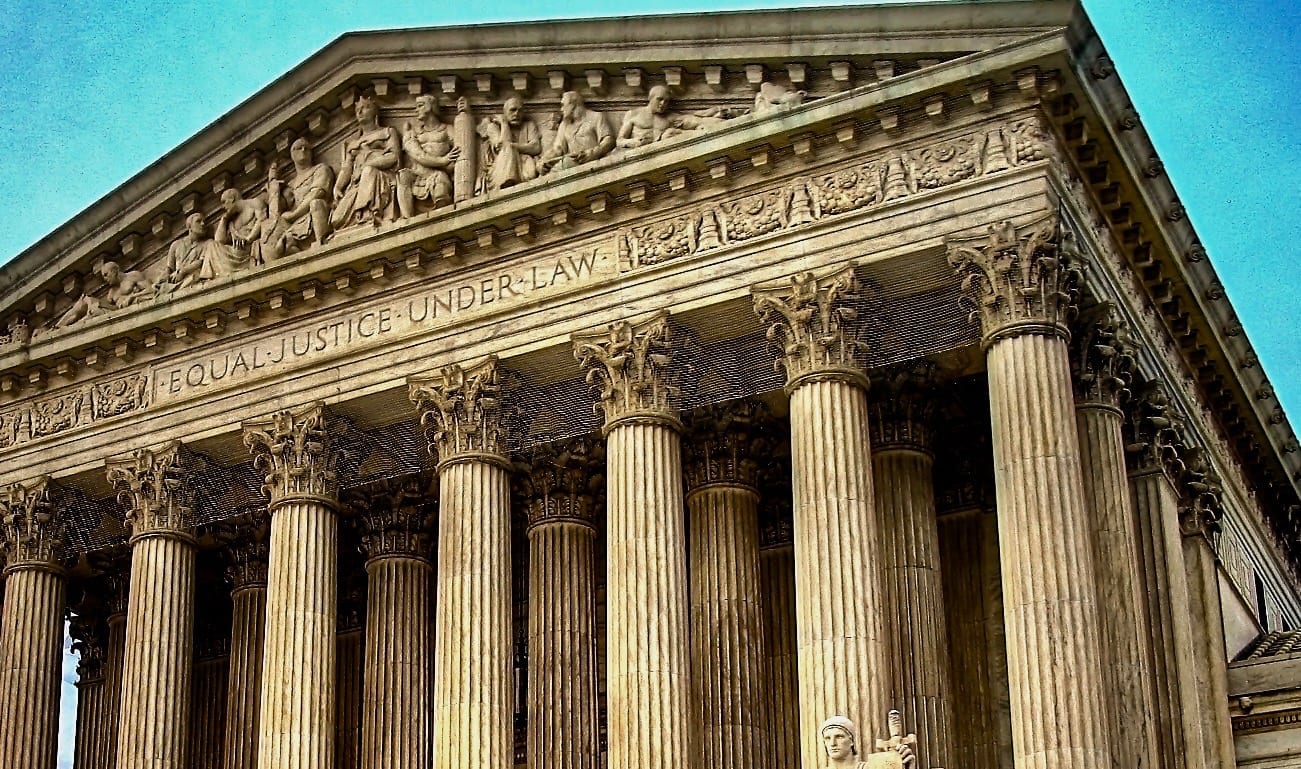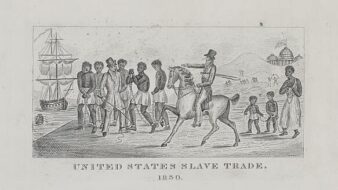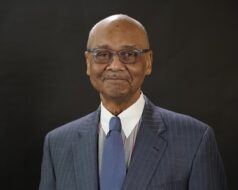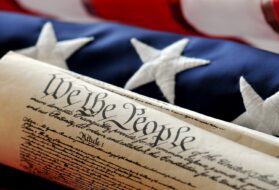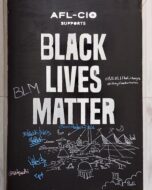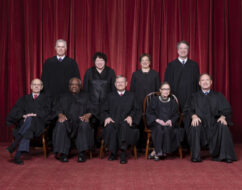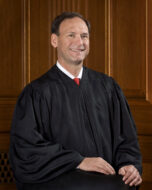

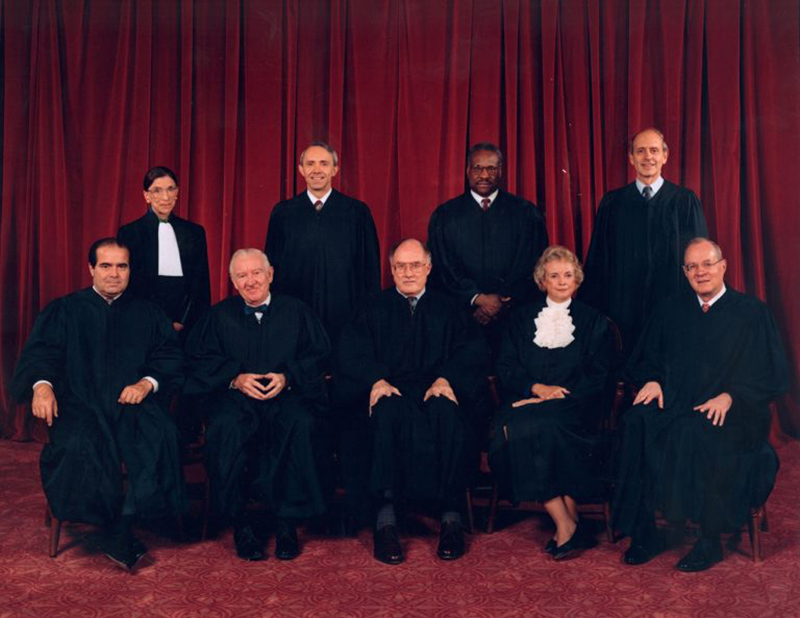
Introduction
James Dale was an assistant scoutmaster in the Boy Scouts of America. He had been involved with the organization since the age of eight and had attained its highest honor of Eagle Scout. While a college student at Rutgers University, he “came out” and became copresident of the Gay/Lesbian Alliance, a group that advocated for gay rights. In an interview, he discussed the importance of role models for gay scouts. Upon discovering this, the Boy Scouts dismissed him as scoutmaster and revoked his membership, maintaining that his openly gay advocacy was inconsistent with the values they sought to instill in young men. Dale sued under a New Jersey accommodations law that prohibited discrimination on the basis of sexual orientation in public places. In response, the Boy Scouts argued that the nondiscrimination law was inapplicable because their private status made them immune from the state public accommodation law. They claimed that the freedom of association guaranteed by the First Amendment allowed them to control their own mission and membership. Accordingly, they had the right to exclude anyone who did not share their beliefs. The New Jersey Supreme Court ruled in Dale’s favor.
Chief Justice William Rehnquist (1924–2005), writing for a 5–4 majority, reversed the decision in favor of the Boy Scouts. The status of the Boy Scouts as a private organization was crucial to his reasoning. His opinion relied upon the precedent of Hurley v. Irish-American Gay, Lesbian, and Bisexual Group of Boston (1995). In that unanimous decision, the Court permitted the organizers of a St. Patrick’s Day Parade in Boston to exclude a gay group from the parade because their inclusion would have delivered a message the organizers did not wish to convey. Justice Stevens, in dissent, argued that the reasoning of Hurley did not apply in this case.
Source: 530 U.S. 640, https://www.law.cornell.edu/supct/html/99-699.ZO.html.
CHIEF JUSTICE REHNQUIST delivered the opinion of the Court.
Petitioners[1] are the Boy Scouts of America and the Monmouth Council, a division of the Boy Scouts of America (collectively, Boy Scouts). The Boy Scouts is a private, not-for profit organization engaged in instilling its system of values in young people. The Boy Scouts asserts that homosexual conduct is inconsistent with the values it seeks to instill. Respondent[2] is James Dale, a former Eagle Scout whose adult membership in the Boy Scouts was revoked when the Boy Scouts learned that he is an avowed homosexual and gay rights activist. The New Jersey Supreme Court held that New Jersey’s public accommodations law requires that the Boy Scouts readmit Dale. This case presents the question whether applying New Jersey’s public accommodations law in this way violates the Boy Scouts’ First Amendment right of expressive association. We hold that it does. . . .
In Roberts v. United States Jaycees (1984), [3] we observed that “implicit in the right to engage in activities protected by the First Amendment” is “a corresponding right to associate with others in pursuit of a wide variety of political, social, economic, educational, religious, and cultural ends.” This right is crucial in preventing the majority from imposing its views on groups that would rather express other, perhaps unpopular, ideas. See ibid. (stating that protection of the right to expressive association is “especially important in preserving political and cultural diversity and in shielding dissident expression from suppression by the majority”). Government actions that may unconstitutionally burden this freedom may take many forms, one of which is “intrusion into the internal structure or affairs of an association” like a “regulation that forces the group to accept members it does not desire.” Forcing a group to accept certain members may impair the ability of the group to express those views, and only those views, that it intends to express. Thus, “[f]reedom of association . . . plainly presupposes a freedom not to associate.”
The forced inclusion of an unwanted person in a group infringes the group’s freedom of expressive association if the presence of that person affects in a significant way the group’s ability to advocate public or private viewpoints (New York State Club Assn., Inc. v. City of New York, 1988). But the freedom of expressive association, like many freedoms, is not absolute. We have held that the freedom could be overridden “by regulations adopted to serve compelling state interests,[4] unrelated to the suppression of ideas, that cannot be achieved through means significantly less restrictive of associational freedoms” (Roberts).
To determine whether a group is protected by the First Amendment’s expressive associational right, we must determine whether the group engages in “expressive association.” The First Amendment’s protection of expressive association is not reserved for advocacy groups. But to come within its ambit, a group must engage in some form of expression, whether it be public or private.
Because this is a First Amendment case where the ultimate conclusions of law are virtually inseparable from findings of fact,[5] we are obligated to independently review the factual record to ensure that the state court’s judgment does not unlawfully intrude on free expression. The record reveals the following. The Boy Scouts is a private, nonprofit organization. According to its mission statement:
It is the mission of the Boy Scouts of America to serve others by helping to instill values in young people and, in other ways, to prepare them to make ethical choices over their lifetime in achieving their full potential.
The values we strive to instill are based on those found in the Scout Oath and Law:
Scout Oath
On my honor I will do my best
To do my duty to God and my country and to obey the Scout Law;
To help other people at all times;
To keep myself physically strong, mentally awake, and morally straight.
Scout Law
A Scout is Trustworthy, Obedient, Loyal, Cheerful, Helpful, Thrifty, Friendly, Brave, Courteous, Clean, Kind, Reverent.
Thus, the general mission of the Boy Scouts is clear: “[T]o instill values in young people.” The Boy Scouts seeks to instill these values by having its adult leaders spend time with the youth members, instructing and engaging them in activities like camping, archery, and fishing. During the time spent with the youth members, the scoutmasters and assistant scoutmasters inculcate them with the Boy Scouts’ values—both expressly and by example. It seems indisputable that an association that seeks to transmit such a system of values engages in expressive activity. (“Even the training of outdoor survival skills or participation in community service might become expressive when the activity is intended to develop good morals, reverence, patriotism, and a desire for self-improvement”) (Roberts).
Given that the Boy Scouts engages in expressive activity, we must determine whether the forced inclusion of Dale as an assistant scoutmaster would significantly affect the Boy Scouts’ ability to advocate public or private viewpoints. This inquiry necessarily requires us first to explore, to a limited extent, the nature of the Boy Scouts’ view of homosexuality.
The values the Boy Scouts seeks to instill are “based on” those listed in the Scout Oath and Law. The Boy Scouts explains that the Scout Oath and Law provide “a positive moral code for living; they are a list of ‘do’s’ rather than ‘don’ts.’ ” The Boy Scouts asserts that homosexual conduct is inconsistent with the values embodied in the Scout Oath and Law, particularly with the values represented by the terms “morally straight” and “clean.”
Obviously, the Scout Oath and Law do not expressly mention sexuality or sexual orientation. And the terms “morally straight” and “clean” are by no means self-defining. Different people would attribute to those terms very different meanings. For example, some people may believe that engaging in homosexual conduct is not at odds with being “morally straight” and “clean.” And others may believe that engaging in homosexual conduct is contrary to being “morally straight” and “clean.” The Boy Scouts says it falls within the latter category. . . .
The Boy Scouts asserts that it “teach[es] that homosexual conduct is not morally straight and that it does “not want to promote homosexual conduct as a legitimate form of behavior.” We accept the Boy Scouts’ assertion. We need not inquire further to determine the nature of the Boy Scouts’ expression with respect to homosexuality. But because the record before us contains written evidence of the Boy Scouts’ viewpoint, we look to it as instructive, if only on the question of the sincerity of the professed beliefs.
A 1978 position statement to the Boy Scouts’ Executive Committee, signed by Downing B. Jenks, the president of the Boy Scouts, and Harvey L. Price, the chief scout executive, expresses the Boy Scouts’ “official position” with regard to “homosexuality and scouting”:
- May an individual who openly declares himself to be a homosexual be a volunteer scout leader?
- No. The Boy Scouts of America is a private, membership organization and leadership therein is a privilege and not a right. We do not believe that homosexuality and leadership in scouting are appropriate. We will continue to select only those who in our judgment meet our standards and qualifications for leadership.
Thus, at least as of 1978—the year James Dale entered scouting—the official position of the Boy Scouts was that avowed homosexuals were not to be scout leaders. . . .
The Boy Scouts publicly expressed its views with respect to homosexual conduct by its assertions in prior litigation. For example, throughout a California case with similar facts filed in the early 1980s, the Boy Scouts consistently asserted the same position with respect to homosexuality that it asserts today. We cannot doubt that the Boy Scouts sincerely holds this view.
We must then determine whether Dale’s presence as an assistant scoutmaster would significantly burden the Boy Scouts’ desire to not “promote homosexual conduct as a legitimate form of behavior.” As we give deference to an association’s assertions regarding the nature of its expression, we must also give deference to an association’s view of what would impair its expression. See, e. g., La Follette (considering whether a Wisconsin law burdened the National Party’s associational rights and stating that “a state, or a court, may not constitutionally substitute its own judgment for that of the party”). That is not to say that an expressive association can erect a shield against antidiscrimination laws simply by asserting that mere acceptance of a member from a particular group would impair its message. But here Dale, by his own admission, is one of a group of gay scouts who have “become leaders in their community and are open and honest about their sexual orientation.” Dale was the copresident of a gay and lesbian organization at college and remains a gay rights activist. Dale’s presence in the Boy Scouts would, at the very least, force the organization to send a message, both to the youth members and the world, that the Boy Scouts accepts homosexual conduct as a legitimate form of behavior.
Hurley is illustrative on this point. There we considered whether the application of Massachusetts’ public accommodations law to require the organizers of a private St. Patrick’s Day parade to include among the marchers an Irish American gay, lesbian, and bisexual group, GLIB, violated the parade organizers’ First Amendment rights. We noted that the parade organizers did not wish to exclude the GLIB members because of their sexual orientations, but because they wanted to march behind a GLIB banner. We observed:
[A] contingent marching behind the organization’s banner would at least bear witness to the fact that some Irish are gay, lesbian, or bisexual, and the presence of the organized marchers would suggest their view that people of their sexual orientations have as much claim to unqualified social acceptance as heterosexuals. . . . The parade’s organizers may not believe these facts about Irish sexuality to be so, or they may object to unqualified social acceptance of gays and lesbians or have some other reason for wishing to keep GLIB’s message out of the parade. But whatever the reason, it boils down to the choice of a speaker not to propound a particular point of view, and that choice is presumed to lie beyond the government’s power to control.
Here, we have found that the Boy Scouts believes that homosexual conduct is inconsistent with the values it seeks to instill in its youth members; it will not “promote homosexual conduct as a legitimate form of behavior.” As the presence of GLIB in Boston’s St. Patrick’s Day parade would have interfered with the parade organizers’ choice not to propound a particular point of view, the presence of Dale as an assistant scoutmaster would just as surely interfere with the Boy Scout’s choice not to propound a point of view contrary to its beliefs.
The New Jersey Supreme Court determined that the Boy Scouts’ ability to disseminate its message was not significantly affected by the forced inclusion of Dale as an assistant scoutmaster because of the following findings: “Boy Scout members do not associate for the purpose of disseminating the belief that homosexuality is immoral; Boy Scouts discourages its leaders from disseminating any views on sexual issues; and Boy Scouts includes sponsors and members who subscribe to different views in respect of homosexuality.”
We disagree with the New Jersey Supreme Court’s conclusion drawn from these findings.
First, associations do not have to associate for the “purpose” of disseminating a certain message in order to be entitled to the protections of the First Amendment. An association must merely engage in expressive activity that could be impaired in order to be entitled to protection. For example, the purpose of the St. Patrick’s Day parade in Hurley was not to espouse any views about sexual orientation, but we held that the parade organizers had a right to exclude certain participants nonetheless.
Second, even if the Boy Scouts discourages scout leaders from disseminating views on sexual issues—a fact that the Boy Scouts disputes with contrary evidence—the First Amendment protects the Boy Scouts’ method of expression. If the Boy Scouts wishes scout leaders to avoid questions of sexuality and teach only by example, this fact does not negate the sincerity of its belief discussed above.
Third, the First Amendment simply does not require that every member of a group agree on every issue in order for the group’s policy to be “expressive association.” The Boy Scouts takes an official position with respect to homosexual conduct, and that is sufficient for First Amendment purposes. In this same vein, Dale makes much of the claim that the Boy Scouts does not revoke the membership of heterosexual scout leaders that openly disagree with the Boy Scouts’ policy on sexual orientation. But if this is true, it is irrelevant. The presence of an avowed homosexual and gay rights activist in an assistant scoutmaster’s uniform sends a distinctly different message from the presence of a heterosexual assistant scoutmaster who is on record as disagreeing with Boy Scouts policy.
Having determined that the Boy Scouts is an expressive association and that the forced inclusion of Dale would significantly affect its expression, we inquire whether the application of New Jersey’s public accommodations law to require that the Boy Scouts accept Dale as an assistant scoutmaster runs afoul of the scouts’ freedom of expressive association. We conclude that it does.
State public accommodations laws were originally enacted to prevent discrimination in traditional places of public accommodation—like inns and trains. Over time, the public accommodations laws have expanded to cover more places. New Jersey’s statutory definition of “[a] place of public accommodation” is extremely broad. The term is said to “include, but not be limited to,” a list of over fifty types of places. Many on the list are what one would expect to be places where the public is invited. For example, the statute includes as places of public accommodation taverns, restaurants, retail shops, and public libraries. But the statute also includes places that often may not carry with them open invitations to the public, like summer camps and roof gardens. In this case, the New Jersey Supreme Court went a step further and applied its public accommodations law to a private entity without even attempting to tie the term “place” to a physical location. As the definition of “public accommodation” has expanded from clearly commercial entities, such as restaurants, bars, and hotels, to membership organizations such as the Boy Scouts, the potential for conflict between state public accommodations laws and the First Amendment rights of organizations has increased.
We recognized in cases such as Roberts and Duarte that states have a compelling interest in eliminating discrimination against women in public accommodations. But in each of these cases we went on to conclude that the enforcement of these statutes would not materially interfere with the ideas that the organization sought to express. . . .
In Hurley, we applied traditional First Amendment analysis to hold that the application of the Massachusetts public accommodations law to a parade violated the First Amendment rights of the parade organizers. Although we did not explicitly deem the parade in Hurley an expressive association, the analysis we applied there is similar to the analysis we apply here. We have already concluded that a state requirement that the Boy Scouts retain Dale as an assistant scoutmaster would significantly burden the organization’s right to oppose or disfavor homosexual conduct. The state interests embodied in New Jersey’s public accommodations law do not justify such a severe intrusion on the Boy Scouts’ rights to freedom of expressive association. That being the case, we hold that the First Amendment prohibits the state from imposing such a requirement through the application of its public accommodations law. . . .
We are not, as we must not be, guided by our views of whether the Boy Scouts’ teachings with respect to homosexual conduct are right or wrong; public or judicial disapproval of a tenet of an organization’s expression does not justify the state’s effort to compel the organization to accept members where such acceptance would derogate from the organization’s expressive message. “While the law is free to promote all sorts of conduct in place of harmful behavior, it is not free to interfere with speech for no better reason than promoting an approved message or discouraging a disfavored one, however enlightened either purpose may strike the government” (Hurley).
The judgment of the New Jersey Supreme Court is reversed, and the case is remanded for further proceedings not inconsistent with this opinion.
It is so ordered.
JUSTICE STEVENS, with whom JUSTICE SOUTER, JUSTICE GINSBURG, and JUSTICE BREYER join, dissenting.
. . . The evidence before this Court makes it exceptionally clear that the Boy Scouts of America (BSA) has, at most, simply adopted an exclusionary membership policy and has no shared goal of disapproving of homosexuality. BSA’s mission statement and federal charter say nothing on the matter; its official membership policy is silent; its Scout Oath and Law—and accompanying definitions—are devoid of any view on the topic; its guidance for scouts and scoutmasters on sexuality declare that such matters are “not construed to be scouting’s proper area,” but are the province of a scout’s parents and pastor; and BSA’s posture respecting religion tolerates a wide variety of views on the issue of homosexuality. Moreover, there is simply no evidence that BSA otherwise teaches anything in this area, or that it instructs scouts on matters involving homosexuality in ways not conveyed in the Boy Scout or scoutmaster handbooks. In short, Boy Scouts of America is simply silent on homosexuality. There is no shared goal or collective effort to foster a belief about homosexuality at all—let alone one that is significantly burdened by admitting homosexuals. . . .
Equally important is BSA’s failure to adopt any clear position on homosexuality. BSA’s temporary, though ultimately abandoned, view that homosexuality is incompatible with being “morally straight” and “clean” is a far cry from the clear, unequivocal statement necessary to prevail on its claim. Despite the solitary sentences in the 1991 and 1992 policies, the group continued to disclaim any single religious or moral position as a general matter and actively eschewed teaching any lesson on sexuality. It also continued to define “morally straight” and “clean” in the Boy Scout and scoutmaster handbooks without any reference to homosexuality. As noted earlier, nothing in our cases suggests that a group can prevail on a right to expressive association if it, effectively, speaks out of both sides of its mouth. A state’s antidiscrimination law does not impose a “serious burden” or a “substantial restraint” upon the group’s “shared goals” if the group itself is unable to identify its own stance with any clarity. . . .
. . . Moreover, the majority insists that we must “give deference to an association’s assertions regarding the nature of its expression” and “we must also give deference to an association’s view of what would impair its expression.” So long as the record “contains written evidence” to support a group’s bare assertion, “[w]e need not inquire further.” Once the organization “asserts” that it engages in particular expression (ibid.), “[w]e cannot doubt” the truth of that assertion.
This is an astounding view of the law. I am unaware of any previous instance in which our analysis of the scope of a constitutional right was determined by looking at what a litigant asserts in his or her brief and inquiring no further. It is even more astonishing in the First Amendment area, because, as the majority itself acknowledges, “we are obligated to independently review the factual record.” It is an odd form of independent review that consists of deferring entirely to whatever a litigant claims. But the majority insists that our inquiry must be “limited,” because “it is not the role of the courts to reject a group’s expressed values because they disagree with those values or find them internally inconsistent.” See also Brief for Petitioners 25 (“[T]he Constitution protects [BSA’s] ability to control its own message”).
But nothing in our cases calls for this Court to do any such thing. An organization can adopt the message of its choice, and it is not this Court’s place to disagree with it. But we must inquire whether the group is, in fact, expressing a message (whatever it may be) and whether that message (if one is expressed) is significantly affected by a state’s antidiscrimination law. More critically, that inquiry requires our independent analysis, rather than deference to a group’s litigating posture. Reflection on the subject dictates that such an inquiry is required.
Surely there are instances in which an organization that truly aims to foster a belief at odds with the purposes of a state’s antidiscrimination laws will have a First Amendment right to association that precludes forced compliance with those laws. But that right is not a freedom to discriminate at will, nor is it a right to maintain an exclusionary membership policy simply out of fear of what the public reaction would be if the group’s membership were opened up. It is an implicit right designed to protect the enumerated rights of the First Amendment, not a license to act on any discriminatory impulse. To prevail in asserting a right of expressive association as a defense to a charge of violating an antidiscrimination law, the organization must at least show it has adopted and advocated an unequivocal position inconsistent with a position advocated or epitomized by the person whom the organization seeks to exclude. If this Court were to defer to whatever position an organization is prepared to assert in its briefs, there would be no way to mark the proper boundary between genuine exercises of the right to associate, on the one hand, and sham claims that are simply attempts to insulate nonexpressive private discrimination, on the other hand. Shielding a litigant’s claim from judicial scrutiny would, in turn, render civil rights legislation a nullity, and turn this important constitutional right into a farce. . . .
The majority’s argument relies exclusively on Hurley v. Irish-American Gay, Lesbian and Bisexual Group of Boston, Inc. (1995). In that case, petitioners John Hurley and the South Boston Allied War Veterans Council ran a privately operated St. Patrick’s Day parade. Respondent,[6] an organization known as “GLIB,” represented a contingent of gays, lesbians, and bisexuals who sought to march in the petitioners’ parade “as a way to express pride in their Irish heritage as openly gay, lesbian, and bisexual individuals.” When the parade organizers refused GLIB’s admission, GLIB brought suit under Massachusetts’ antidiscrimination law. That statute, like New Jersey’s law, prohibited discrimination on account of sexual orientation in any place of public accommodation, which the state courts interpreted to include the parade. Petitioners[7] argued that forcing them to include GLIB in their parade would violate their free speech rights.
We agreed. We first pointed out that the St. Patrick’s Day parade—like most every parade—is an inherently expressive undertaking. Next, we reaffirmed that the government may not compel anyone to proclaim a belief with which he or she disagrees. We then found that GLIB’s marching in the parade would be an expressive act suggesting the view “that people of their sexual orientations have as much claim to unqualified social acceptance as heterosexuals.” Finally, we held that GLIB’s participation in the parade “would likely be perceived” as the parade organizers’ own speech—or at least as a view which they approved—because of a parade organizer’s customary control over who marches in the parade. Though Hurley has a superficial similarity to the present case, a close inspection reveals a wide gulf between that case and the one before us today. . . .
Dale’s inclusion in the Boy Scouts is nothing like the case in Hurley. His participation sends no cognizable message to the scouts or to the world. Unlike GLIB, Dale did not carry a banner or a sign; he did not distribute any factsheet; and he expressed no intent to send any message. If there is any kind of message being sent, then, it is by the mere act of joining the Boy Scouts. Such an act does not constitute an instance of symbolic speech under the First Amendment.
- 1. A person who makes a formal application to a court for a writ, judicial action in a suit, etc. The Boy Scouts appealed the decision of a lower court to the Supreme Court.
- 2. The respondent, in this case James Dale, is the party against whom a petition is filed, especially one on appeal.
- 3. Roberts v. United States Jaycees.
- 4. See Glossary.
- 5. Determining the facts of a case.
- 6. The respondent is the party against whom a petition is filed, especially one on appeal.
- 7. A person who makes a formal application to a court for a writ, judicial action in a suit, etc.
Inaugural Address (2001)
January 20, 2001
Conversation-based seminars for collegial PD, one-day and multi-day seminars, graduate credit seminars (MA degree), online and in-person.
